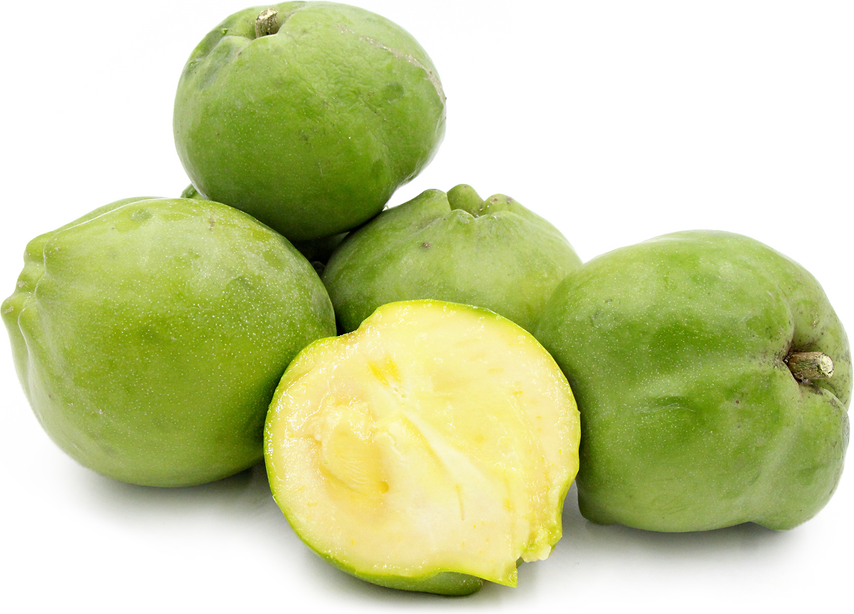


Lamertz White Sapote
Estimated Inventory, lb : 0
Description/Taste
Lammertz White sapotes are green fruits that have a slightly asymmetrical shape and are an average of 10 centimeters in diameter. The fruits usually have the remnants of a stiff stem and prominent ridges at their base, differing from the smooth or pointed ends of other varieties. The skin is smooth and thin and sometimes has a waxy bloom on the surface. The skin is edible, but the taste can be somewhat bitter. The white to off-white colored flesh has a soft, custard-like consistency and offers a sweet flavor with hints of banana, vanilla, and peach. Overly ripe fruits may develop a slightly bitter or spicy taste. Lammertz White sapote have oval, asymmetrical and flattened seeds which contain TOXIC compounds. The delicate fruits bruise easily, rendering the skin dark and the flesh beneath bitter.
Seasons/Availability
Lammertz White sapotes are available year-round with a peak season in the spring and through the summer months.
Current Facts
Lammertz White sapotes are a variety of Casimiroa edulis, also known as the Mexican apple. The fruits are in the citrus family and are not related to other sapote fruits at all. Lammertz sapotes are one of 37 known named cultivars of white sapote. White sapotes, despite the name, are either green or yellow when ripe. The best-known California cultivar is Suebelle, developed in Encinitas, California, and others include Chestnut and Cuccio.
Nutritional Value
Lammertz White sapotes are rich in carbohydrates and are a good source of vitamin C and potassium. They also contain vitamin A, calcium, B-complex vitamins, and the pigment carotene.
Applications
Lammertz White sapotes are generally eaten raw, the flesh scooped from the halved fruit and the seeds discarded. Lammertz White sapote flesh will oxidize quickly and needs a bit of lemon juice or acidulated water to retain its white color. Heat can diminish the fruit’s flavor. Add Lammertz White sapote to green or fruit salads or slaws. Add the pulp to smoothies, shakes, or other beverages or use to make ice cream, sherbets, jellies and marmalade. Lammertz White sapotes are often harvested when underripe to prevent damage to the fruit. Ripen at room temperature for a day or two until it yields to slight pressure. Store unwashed fruits in the refrigerator in a bag for up to 5 days.
Ethnic/Cultural Info
Different parts of the White sapote tree were used medicinally by the people of Central America. Aztecs were said to eat the fruit as a sleep aid. The leaves and bark were used as a sedative and used to treat ailments ranging from diabetes to rheumatism. Studies have shown the leaves, bark, and seeds contain the glucoside casimirosine, which has sedative properties. The fruit also contains certain histamines that have shown to lower blood pressure.
Geography/History
Lammertz White sapotes are said to be native to Mexico. A study done in 2001 identified three groups of White sapote cultivars, based on their flowers. The type was determined by the size of the flower’s ovary and whether it produced pollen. Lammertz White sapotes are a type I variety derived from the blumenthal cultivar. White sapotes are native to Central Mexico and have a range that extends south into Central America. They thrive in higher altitude climates without too much humidity. They are cultivated throughout the Caribbean, in New Zealand, Australia and South Africa. In the United States, Lammertz White sapotes are grown on a very limited scale in Southern California and can be spotted at farmer’s markets or specialty stores.
Recipe Ideas
Recipes that include Lamertz White Sapote. One
| Tinkering with Dinner |
|
White Sapote Ice Cream |




